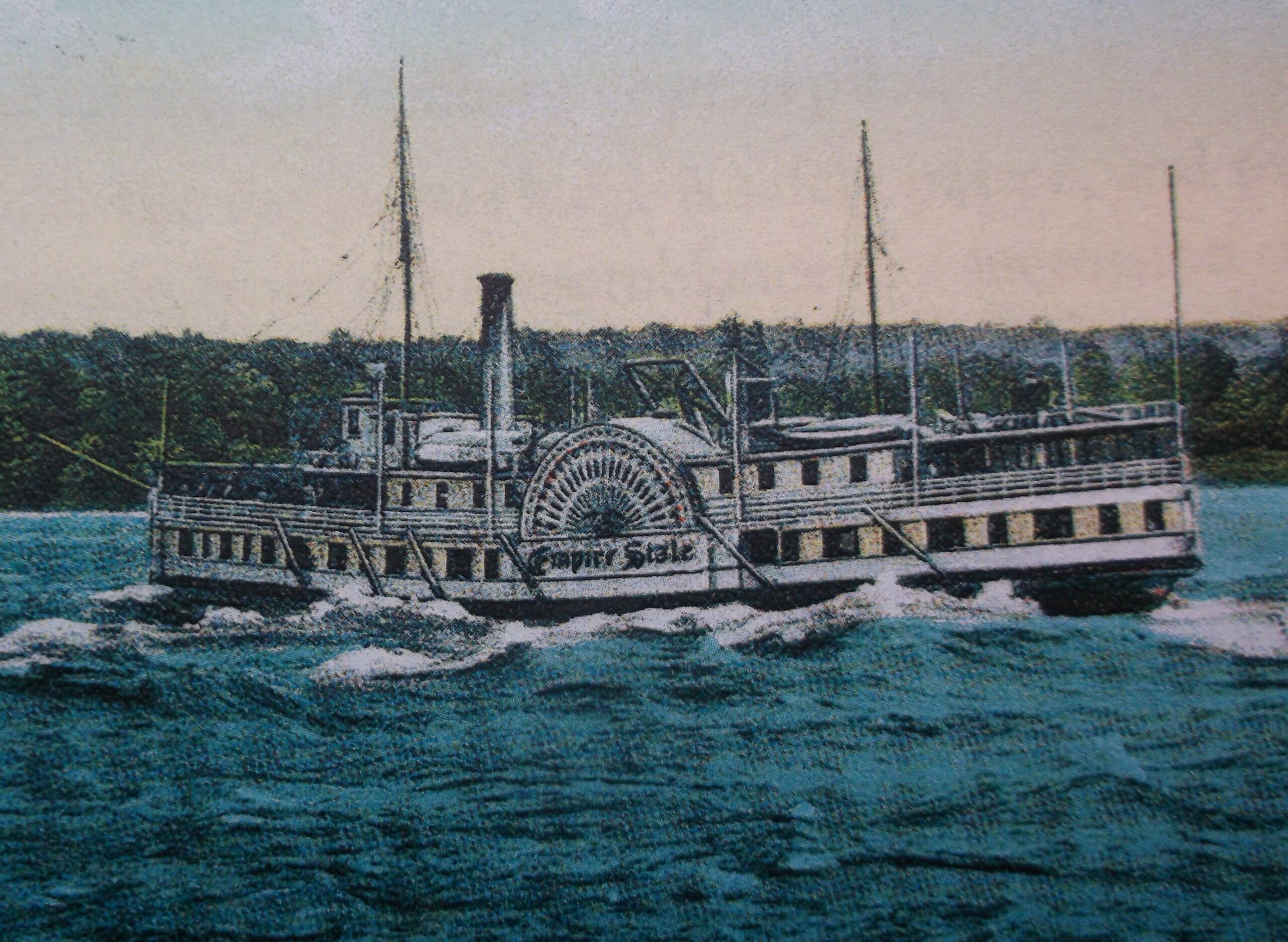Running the St. Lawrence
For 175 years, tourist boats have sailed the St. Lawrence between Kingston and Montreal. Today St. Lawrence Cruise Lines out of Kingston explores the river on The Canadian Empress, while Pearl Seas Cruises sails the whole length of the river on the Pearl Mist. Before the drowning of the Long Sault Rapids to create the St. Lawrence Seaway, taking a cruise to “run the rapids,” on one of the numerous river palaces, was one of Canada’s leading tourist attractions.
The most famous steamers were part of Canada Steamship Lines “Great White Fleet,” which included the Rapids King, Prince and Queen.
Join me in taking a cruise on the S.S. Empire State, on its 1898 descent of the Rapids of the St. Lawrence.
After leaving Alexandria Bay and sailing through the 1,000 Islands while enjoying “a delicious breakfast, the traveller reached the Galops Rapids west of Cardinal, “…which served as a preparation for the swiftness and excitement” to come.”
The vessel now entered the Rapids du Plat, running past Morrisburg. “
A few miles below this the river divided into two parts by Long Sault Island. Thrill seekers took the Canadian side, “A continuous rapid for nine miles; three miles of boisterous commotion, six miles of current and sharp turns.”. The Rapids “rushed along at a speed of 20 miles an hour. The terrific roar and seething violence of the river were intensely fascinating.”
Safely through, the boat passed Cornwall a “busy manufacturing town, progressive and wealthy,” onto “Lake St. Francis, a very picturesque sheet of water…affording passengers an opportunity of enjoying dinner before encountering the next series of rapids.”
After passing Coteau, they entered “the rushing waters of Coteau Rapids,” Seven miles below they enter Cedar Rapids. “A distance of 3 ½ miles is passed in the extraordinary short time of seven minutes. The run through ‘The Cedars’ is very exciting. There is a peculiar motion of the steamer, which seems like settling down, as she glides from one ledge of rock to another.”
Next – Split Rock Rapids “a ledge of rock running from shore to shore,” where the steamer has to navigate a” 60 foot natural break in the rock,” to avoid “certain destruction.”
Next, Cascades, notable for its short waves and then onto Lake St. Louis, where Mount Royal comes in view for the first time.
The steamer then took on an Indigenous pilot to “shoot” the Lachine Rapids, “the most beautiful, formidable and difficult of navigation of the series…The velocity and fierceness of the current was so great “ that a canal was built to circumvent them.
Safely through the steamer passed under “Victoria Bridge, the largest and longest tubular bridge in the world, built wholly of iron.” 9 ½ hours after departure, the vessel docked in Montreal “after the most interesting trip on the American Continent.”





